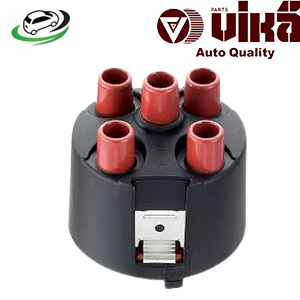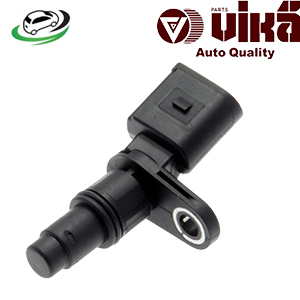-11%
Get AUDI A4 B5 (8D2)/ A4 B6 (8E2)/ A4 B7 (8EC)/ A6 C5 (4B2)/ A8 D2 (4D2 4D8)/ Allroad C5 (4BH) / VW Passat B5 (3B2) Oil Sump 059103604F
The oil sump, often referred to as the oil pan, is a crucial component in an internal combustion engine’s lubrication system. It plays a central role in collecting, storing, and distributing engine oil, which is essential for reducing friction, cooling the engine, and preventing wear on critical engine components. In this detailed exploration, we will dive into the oil sump’s functions, its importance in engine operation, the benefits it provides, and maintenance tips to ensure longevity and performance.
1. What is an Oil Sump?
The oil sump is a metal or composite container located at the bottom of the engine, typically bolted to the underside of the engine block. It forms the reservoir where engine oil collects after circulating through the engine. The sump serves as a catch basin for oil that has been pumped through the engine to lubricate moving parts such as the crankshaft, camshaft, pistons, and valves.
This component is part of the engine’s lubrication system, which also includes the oil pump, oil filter, and various oil galleries that distribute the oil to different parts of the engine. The oil sump is designed to handle both the collection and recirculation of oil, ensuring that the engine remains well-lubricated and protected from excessive wear.
Types of Oil Sumps
There are primarily two types of oil sumps used in internal combustion engines:
- Wet Sump: The most common type, found in the majority of passenger vehicles. In a wet sump system, oil is stored directly in the sump itself and pumped through the engine by an oil pump located within the sump.
- Dry Sump: Commonly used in high-performance or racing engines. In this system, the oil is stored in an external reservoir rather than the sump, allowing for better control of oil pressure and more efficient cooling. The dry sump system prevents oil starvation during hard cornering or acceleration, where oil sloshing in a wet sump could cause the oil pump to suck air.
2. Functions of the Oil Sump
The oil sump performs several vital functions that contribute to the proper operation of the engine. Without it, the lubrication system would be unable to function, leading to rapid engine wear and eventual failure.
A. Oil Storage and Recirculation
The primary role of the oil sump is to serve as a reservoir for engine oil. After the oil is pumped through the engine’s oil galleries to lubricate moving parts, it drains back into the sump by gravity. From there, the oil pump draws oil from the sump and recirculates it throughout the engine.
This continuous cycle ensures that the engine remains lubricated at all times, reducing friction between moving components. Proper lubrication minimizes wear, prevents overheating, and ensures the engine operates smoothly.
B. Cooling the Engine
The oil sump also plays an important role in cooling the engine. As engine oil circulates through the engine, it absorbs heat generated by friction between the moving parts. Once the hot oil returns to the sump, it is cooled by the air passing beneath the vehicle or, in some cases, by an additional oil cooler.
This cooling effect helps prevent the engine from overheating, which could otherwise lead to metal components expanding or seizing. An efficient oil sump design, especially in performance engines, contributes significantly to maintaining a stable engine temperature.
C. Debris Collection
As the engine operates, small metal particles, carbon deposits, and other contaminants can accumulate in the oil. While the oil filter removes most contaminants, some debris may settle at the bottom of the oil sump. The sump is designed to collect this debris, preventing it from circulating back through the engine and causing potential damage.
Some oil sumps feature magnetic drain plugs to attract and hold metal particles, reducing the amount of debris floating in the oil. The debris can then be removed during oil changes when the sump is drained.
D. Separation of Air and Oil
The oil sump also helps in separating air from the oil. During the engine’s operation, oil can become aerated (mixed with air bubbles), which reduces its effectiveness as a lubricant. The oil sump provides a large enough surface area for the oil to settle, allowing air bubbles to rise to the top and escape. This ensures that only clean, aeration-free oil is pumped back into the engine.
E. Structural Support
In some vehicle designs, the oil sump contributes to the structural integrity of the engine. It is bolted directly to the engine block and, in some cases, provides additional rigidity to the engine assembly. Additionally, the oil sump acts as a mounting point for various engine components, including the oil pump and oil pickup tube.
3. Benefits of a Well-Designed Oil Sump
A properly functioning oil sump provides several important benefits for the overall performance and longevity of the engine:
A. Improved Lubrication
By storing and recirculating the engine oil, the oil sump ensures that all moving parts are properly lubricated. This reduces friction between metal surfaces, minimizing wear and tear on components like the crankshaft, pistons, and camshaft.
B. Efficient Cooling
The oil sump’s cooling function is particularly valuable in high-performance engines, where temperatures can soar during intense driving. By cooling the oil before it is recirculated, the sump helps maintain optimal engine temperature and prevents overheating.
C. Extended Engine Life
Proper lubrication and cooling provided by the oil sump lead to reduced wear and tear on the engine, extending its operational life. A well-maintained oil sump helps prevent costly engine repairs and breakdowns, particularly in high-mileage vehicles.
D. Enhanced Oil Pressure Stability
In engines with a dry sump system, the external reservoir allows for more consistent oil pressure, even during aggressive driving or high-speed maneuvers. This prevents oil starvation, ensuring that all engine components receive sufficient lubrication at all times.
E. Debris Removal
The oil sump acts as a final catchment area for debris and contaminants that may not be filtered out by the oil filter. This ensures that the oil circulating through the engine remains clean, reducing the risk of component damage.
4. Common Problems and Symptoms of a Faulty Oil Sump
Over time, the oil sump can develop issues due to wear and tear, environmental factors, or improper maintenance. Here are some common problems associated with oil sumps and the symptoms that may arise:
A. Oil Leaks
One of the most common issues with an oil sump is leaking oil. This can occur due to a damaged gasket between the sump and engine block, corrosion of the sump material, or physical damage (such as from road debris). An oil leak can lead to low oil levels, resulting in insufficient lubrication and potential engine damage.
Symptoms of an Oil Leak:
- Puddles of oil under the vehicle.
- The oil warning light on the dashboard.
- Burning oil smell.
- Engine overheating or knocking noises.
B. Sump Damage
The oil sump is located at the very bottom of the engine, making it vulnerable to damage from road debris, potholes, or hitting objects. A damaged sump may develop cracks, leading to oil leaks or complete loss of oil.
Symptoms of Sump Damage:
- Visible dents or cracks in the sump.
- Sudden loss of oil pressure.
- Oil splashing underneath the vehicle.
C. Clogged Oil Pickup Tube
The oil sump houses the oil pickup tube, which draws oil from the sump and sends it to the engine. If the tube becomes clogged with debris, it can restrict oil flow, resulting in low oil pressure and poor lubrication.
Symptoms of a Clogged Oil Pickup:
- Oil pressure warning light.
- Engine noise (due to lack of lubrication).
- Increased engine temperature.
5. Maintenance and Care for Oil Sumps
Proper maintenance of the oil sump is essential to prevent leaks, clogs, and other issues that can lead to engine damage. Here are some tips for maintaining your oil sump:
A. Regular Oil Changes
Changing the engine oil at recommended intervals is one of the most important maintenance tasks for the oil sump. Fresh oil reduces the buildup of contaminants and debris that can settle in the sump. During oil changes, the sump is drained, removing accumulated debris and sludge.
B. Inspect for Leaks
Regularly inspect the oil sump and surrounding areas for signs of oil leaks. If you notice oil spots under your vehicle, check the sump for visible damage or a worn gasket. Promptly addressing leaks can prevent major engine issues.
C. Check the Oil Level
Monitoring the engine’s oil level is crucial. If the oil level is too low, the sump will not have enough oil to recirculate through the engine, leading to poor lubrication and potential overheating. Use the dipstick to check oil levels regularly.
D. Replace the Sump Gasket
The gasket that seals the oil sump to the engine block can wear out over time, leading to oil leaks. If you notice an oil leak from this area, it may be time to replace the sump gasket. A new gasket ensures a proper seal and prevents future leaks.
E. Address Physical Damage
If your oil sump has been physically damaged by road debris or impact, it should be replaced as soon as possible. Driving with a damaged oil sump can result in oil leaks and catastrophic engine failure.
6. Conclusion
The oil sump plays a fundamental role in maintaining engine lubrication, cooling, and debris collection. Whether in a wet or dry sump system, it ensures the proper recirculation of oil, which is vital for the smooth operation of the engine. Regular maintenance, including oil changes, leak inspections, and addressing sump damage, will help preserve the health of the oil sump and, by extension, the engine itself. With the right care, an oil sump can contribute to the longevity, efficiency, and performance of your vehicle’s engine.
Follow us on Facebook for more parts.




Reviews
Clear filtersThere are no reviews yet.